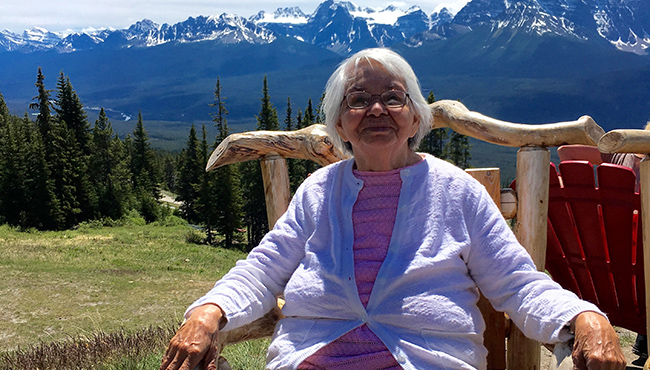‘Language does mean something’

By Rick Garrick
Indigenous place names were usually created to identify how a location or landmark looked like according to the people who lived in the area.
“They usually named a place according to what it looks like or what part of the country it is in,” says Wikwemikong’s Josephine Pelletier, a retired Anishinabemowin teacher. “It sort of gives you an idea of what it looks like, like if its a bay or a river beside it. It gives you identification — it was easier for them to find it, that’s why they named those places that (way).”
Pelletier says Indigenous place names are important because they are part of the Indigenous people’s history.
“People like to know how these things came about,” Pelletier says, noting that her community’s name was originally Wiikwemikoong. “So now our chief and council changed it to that pronunciation.”
Pelletier says Manitoulin Island used to be called Odawa Mnis (Island) because of the large population of Odawa who lived on the island. She adds that the island’s current name refers to a spirit.
“There was a spirit there that lived in that area in a certain part of this island,” Pelletier says. “So Mnidoo is like a spirit or a spirit keeper. So that is where the word Manitoulin, Mnidoo Island, (comes from.)”
Pelletier says the name of the community of Manitowaning was originally pronounced as Manidoowaaning, an Odawa word which means cave of the spirit.
“There was a den area there where the spirits were,” Pelletier says. “In fact, people say there is a bit of a tunnel that joins Manitowaning Bay with South Bay. But that is what the people originally talked about.”
Pelletier says Little Current used to be called Waewaebijewung.
“It means the current there does not really follow one area,” Pelletier says. “It sort of goes back and forth.”
Pelletier says Sheguiandah still has its original name and the community of West Bay changed its name back to the original name, M’Chigeeng, which means big bay.
“Mindemoya, on the island, it actually means an old woman,” Pelletier says.
Pelletier is part of an immersion group of about five or six Anishinabemowin experts who look at the old words and their meanings.
“Our next project has to do with the island itself,” Pelletier says. “They did give us the map where these original names are printed, so our job is to re-write them so everyone can understand (the names) because nowadays they have a little bit of a different writing system for the language.”
Pelletier says the immersion group previously worked on translating documents about the legends and other stories into Anishinabemowin and proofreading Anishinabemowin documents over the past 15-20 years.
“They wanted us to proofread it so that all the kids that are taking the language in the schools will be able to read it,” Pelletier says, noting that old-style translations had sounds that were based on the French language. “So some of the names they did translate that have a J in it, people nowadays tend to use it like an English J sound, which is not the way it is supposed to be pronounced.”
Pelletier says Odawa is still being used on Manitoulin Island, but the population now includes Anishinabe, Pottawatomi and other Indigenous and non-Indigenous peoples.
“There are still quite a few of us who understand each other,” Pelletier says, adding that some young people will greet her in the “Anishinabe way” whenever she meets them in the community. “And you do the same for them so that they will realize that the language does mean something.”


